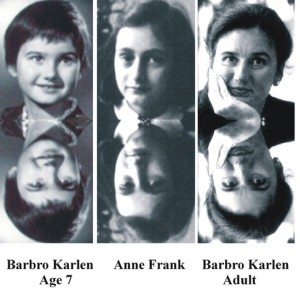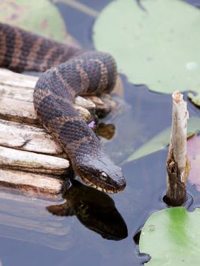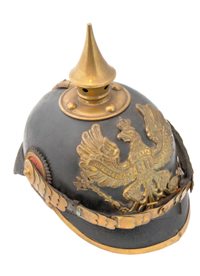How Derived: Memories in Childhood
Researcher: Ian Stevenson, MD
From: European Cases of the Reincarnation Type, by Ian Stevenson, MD
Article by Walter Semkiw, MD
Elizabeth Haich, author of Initiation, has a Son with Past Life Memories
 Gedeon Haich was born on March 7, 1921 in Budapest, Hungary. Vajdahunyad Castle, in Budapest, is pictured to the right. His parents were Subo and Elisabeth Haich. Elisabeth was raised in a Christian home, but later developed an interest in yoga and eventually she wrote a spiritual autobiography entitled, Initiation.
Gedeon Haich was born on March 7, 1921 in Budapest, Hungary. Vajdahunyad Castle, in Budapest, is pictured to the right. His parents were Subo and Elisabeth Haich. Elisabeth was raised in a Christian home, but later developed an interest in yoga and eventually she wrote a spiritual autobiography entitled, Initiation.
A section of her book is dedicated to her son’s reincarnation case and she provided quotations from Gedeon in her narrative. In European Cases of the Reincarnation Type, Ian Stevenson reproduced these quotations.
Elisabeth vouched that in his childhood, Gedeon did not have any books on Africa or other places with dark-skinned natives. He didn’t see any movies on Africa and he didn’t know any African people. She stated that Gedeon did not learn of African places or customs through normal means.
Past Life Memories, Drawings & Phobia of Swimming in a Lake
When he was 4 to 5 years old, Gedeon developed a habit of drawing people in pictures with dark brown skin. When his European mother, Elisabeth, pointed out that he was making the complexions of his figures too dark, Gedeon ignored her and continued to color them brown.
 During the same period of time, Elisabeth noticed another unusual trait during an outing at their family’s summer home near a lake in Hungary. When Gedeon was asked to join other family members who were swimming in the lake, he refused.
During the same period of time, Elisabeth noticed another unusual trait during an outing at their family’s summer home near a lake in Hungary. When Gedeon was asked to join other family members who were swimming in the lake, he refused.
Gedeon screamed and struggled to get free, so that he would not enter the lake’s water. Elisabeth couldn’t understand Gedeon’s fear of and resistance to swimming in the lake. She noted that Gedeon didn’t respond in the same way when entering man-made swimming pools.
Past Life Memories: Gedeon Remembers having a Family of Dark and Half Naked People
 When Gedeon was 6 or 7 years old, he unexpectedly told Elisabeth that he thought he had a prior lifetime. He said he remembered being in a different country with different people. He said that he had a wife and children. He continued:
When Gedeon was 6 or 7 years old, he unexpectedly told Elisabeth that he thought he had a prior lifetime. He said he remembered being in a different country with different people. He said that he had a wife and children. He continued:
“My wife and children and other people there are not like people here; they are all black and completely half naked.” (1)
Elisabeth then asked Gedeon where he lived and he responded by drawing a picture of a hut, with a cone-shaped roof topped with a vent for smoke. In front of the hut was a naked woman with long breasts and next to the hut there was a river with waves on it. Gedeon claimed that this woman in his drawing was his wife.
Past Life Memories: Gedeon’s Past Life Wife has Long, Hanging Breasts
Elisabeth asked why he drew his wife with such long, hanging, ugly breasts. Gedeon looked at his mother as if she was insane. He retorted:
“Because that is the way they were. And they are not ugly. She is very beautiful.” (2)
Further, explaining to Elisabeth why he thought he had a past lifetime, he bemoaned:
 “And listen, Mama, I am also asking how it is that every morning, when I wake up and my eyes are not yet open, I immediately have the feeling that I must jump out of bed and go hunting in order to find food for my wife and children. It is only when I get my eyes open and look around the room that I remember that I am a small boy and your son.” (3)
“And listen, Mama, I am also asking how it is that every morning, when I wake up and my eyes are not yet open, I immediately have the feeling that I must jump out of bed and go hunting in order to find food for my wife and children. It is only when I get my eyes open and look around the room that I remember that I am a small boy and your son.” (3)
A Past Life Phobia of a River and Lake Monster
Gedeon continued to describe his lifetime and draw pictures that illustrated his narrative.
“We lived in little huts like these, which we built ourselves. Also, each of us made a boat for himself by hollowing out and carving the trunk of a tree.
There was a large river, but no one could go into it as we can in the lake here. A kind of monster lived in the water. I don’t remember what kind it was, but it bit people’s legs off and that’s why last year I yelled so when you wanted me to go in the water of the lake.
 I was afraid that there was something in the water that could bite my legs; and even now I get that feeling when I go in the water, even though I know there is nothing dangerous living in the water here. (4)
I was afraid that there was something in the water that could bite my legs; and even now I get that feeling when I go in the water, even though I know there is nothing dangerous living in the water here. (4)
Ian Stevenson reasoned that the monster in the river was likely a crocodile and that a past life fear of being bit by this reptile was responsible for Gedeon’s phobia of swimming in the lake near the family’s summer house.
Past Life Ability: Gedeon can Maneuver a Canoe like an Acrobat
Still at the age of 6 or 7, Gedeon continued his story. He told Elisabeth:
 “And remember, Mama, how, when we bought a boat for the family I wanted to row it. You told me that I had first to learn how to row. But I knew that I can row, because I could make my tree-boat move long the water just as if it were part of me. I could even sit in my boat and flip over to one side, go under the water and come up on the other side, still in the boat.
“And remember, Mama, how, when we bought a boat for the family I wanted to row it. You told me that I had first to learn how to row. But I knew that I can row, because I could make my tree-boat move long the water just as if it were part of me. I could even sit in my boat and flip over to one side, go under the water and come up on the other side, still in the boat.
And you said: ‘All right. Try to row. You will find that you can’t do it.’
Then you were all surprised when I, taking one oar—my arms were too short to handle both oars—showed that I could row and even maneuver the boat between other boats and between people. With my tree-boat, where I lived, I could do everything. You should have seen me! The trees were not like the ones here.” (5)
Gedeon then pointed to a tree that he had drawn, which looked like a palm tree, indicating that his was the type of tree his past life boat was carved from.
Past Life Memories: Gedeon would Hunt with a Bow and Boomerang
Gedeon also drew a picture of himself using a bow and arrow to hunt a bird that was in one of the palm trees. He also drew a curved object that he used for hunting. Gedeon explained that when he threw this curved weapon, it would return back on its own. Though he didn’t know the word, Gedeon was describing a boomerang.
A Past Life Talent for Climbing Trees
 When Gedeon was 13 years old, an incident revealed a hidden skill for climbing trees. A neighbor came running to Elisabeth and exclaimed that Gedeon had climbed to the top of a poplar tree that was 20-25 meters high, which is the equivalent of 65-80 feet.
When Gedeon was 13 years old, an incident revealed a hidden skill for climbing trees. A neighbor came running to Elisabeth and exclaimed that Gedeon had climbed to the top of a poplar tree that was 20-25 meters high, which is the equivalent of 65-80 feet.
Elisabeth ran out and looked up into the tree. She couldn’t see Gedeon, due to the branches and leaves of the tree, but she could hear him. She demanded that he come down. Reluctantly, Gedeon climbed down slowly, but very skillfully. Elisabeth said he climbed down the tree “like a small monkey.” (6)
Elisabeth asked why he did something so dangerous. Gedeon replied that he had made a nest at the top of the tree and that he could eat cooked corn up there, which tasted much better than on the ground. He also remarked on the wonderful view that he had at the top of the tree.
Elisabeth told him that it was too dangerous for him to climb so high and she ordered him to build his nest on the ground. At that, Gedeon became angry and snapped at her:
“I would like to know who looked out for me when I was in the jungle and climbed trees even higher than this one to watch for animals. Where were you then?” (7)
A Past Life Talent for Drumming
 When Gedeon was 15 years old, he asked his mother to buy him a drum. Elisabeth took him to the largest music store in the area, where Gedeon picked out the biggest drum in the shop.
When Gedeon was 15 years old, he asked his mother to buy him a drum. Elisabeth took him to the largest music store in the area, where Gedeon picked out the biggest drum in the shop.
When they returned home, Gedeon started playing the drum with what was described as astonishing skill. He played very complicated rhythms and he appeared to be in an ecstatic state while doing so, even crying as he drummed. After playing an unusual rhythm, he said to Elisabeth:
“Do you see, Mama, that is the way we could send signals and messages to each other over great distances.” (8)
Elisabeth had no idea of how Gedeon had learned to play the drum in a sophisticated way, nor did she understand how he acquired his ability to row a boat with one oar or climb “like a small monkey.”
Past Life Emotions: Gedeon Sobs When He Sees Scenes of Africa
 When asked where his past lifetime took place, Gedeon, as a child, would simply state that it was in the jungle or tropics. When Elisabeth suggested to Gedeon, as an adult, that he should read about Africa, he replied:
When asked where his past lifetime took place, Gedeon, as a child, would simply state that it was in the jungle or tropics. When Elisabeth suggested to Gedeon, as an adult, that he should read about Africa, he replied:
“What is the point? I know better how things were there and don’t need to know what white men think about them. And when I do read correct descriptions, I weep, even though I try not to do so.” (9)
When Elisabeth went with Gedeon, as an adult, to a movie about dark-skinned natives, presumably in Africa, she noticed that he wept, and even sobbed uncontrollably, during the movie.
Also, as an adult, Gedeon indicated that he felt that his past incarnation was indeed in Africa, noting that he had a strong affinity for Africa, even though he had never been there in his contemporary lifetime.
The Death of George Floyd: How Evidence of Reincarnation Can Help Prevent Future Tradigies Based on Racial and Ethnic Bias
In 2020, the world was been shocked by the death of George Floyd at the hands of a Minneapolis police officer during an arrest. This officer knealt on Floyd’s neck as he was lying on the ground while handcuffed until George died by the lack of air to his lungs and compression of the arteries in his neck that provided blood flow to his brain.
Though the trial of this officer has not yet occured and we do not know what the result will be, there is a consensus that there is a bias in the United States against African-African Americans. I am Caucasian, so I have not experienced this directly, but I remember vividly an episode that demonstrates racial hate, which happened when I was in my medical training.
 I was walking on a street in Denver with a dear African-American friend of mine, Keith La Grenade, MD, who was in the same medical training program in psychiatry with me at the University of Colorado.
I was walking on a street in Denver with a dear African-American friend of mine, Keith La Grenade, MD, who was in the same medical training program in psychiatry with me at the University of Colorado.
Without provocation, a Caucasian driver of a car driving by us yelled out: “Nigger!”
I was shocked, as I had never witnessed such a racial insult to another in my life. I asked Keith: “Has this happened to you before?”
Keith answered: “All the time.”
After I wrote these passages, I had the desire to contact Keith, as we had not been in touch in many years. Sadly, I learned that he had died in 2016.
Keith La Grenade, MD Obituary
Evidence of Reincarnation Can Help End Racisim
Evidence of reincarnation shows that we can change religion, nationality, ethnic affiliation and race from one lifetime to another. When people realize this is how life works, the basis of hate and prejudice against those we see as different from ourselves disappears. Those with dark skin can reincarnate as someone with light skin and vis versa.
In this way, evidence of reincarnation can help create a more tolerant and peaceful world
As Gedeon’s presumed past life persona in Africa was not specifically identified, his case could not be historically validated. The strength of this case rests upon the unexpected talents that Gedeon demonstrated, which one would not be expected from a Hungarian youth.
These include, as a young child, the natural ability to row a boat with one oar, climbing trees like a monkey and being able to play complicated rhythms on a drum without any prior experience or training.
In addition, Gedeon’s phobia of swimming in lakes or rivers can not be explained without a past life cause. In his past lifetime in Africa, Gedeon remembered a fear of entering a river with monsters that bit people’s legs off. These monsters were most likely crocodiles.
 Phobia from a Past Lifetime: As noted, Gedeon had a phobia of natural bodies of water, which seemed to stem from his past life experience with crocodiles.
Phobia from a Past Lifetime: As noted, Gedeon had a phobia of natural bodies of water, which seemed to stem from his past life experience with crocodiles.
Past Life Talents & Abilities: Gedeon could steer a boat with one oar, climb trees like a monkey and drum like a professional, without any prior training or experience in his contemporary lifetime.
Reincarnation & Change in Race: Gedeon described himself, his wife and the people of his tribe as dark skinned natives that lived in a land that was most likely Africa. Gedeon, as an adult, expressed a great affinity for Africa, though he had never been there in his contemporary incarnation. He himself thought his past incarnation, indeed, took place in Africa.
Another important reincarnation case that shows how evidence of reincarnation can help create a more peaceful world, where a person was killed for being a Jew in a Nazi world, but reincarnated as a Christian, is the:
Reincarnation Case of Anne Frank | Barbro Karlen
Footnotes
1. Stevenson, Ian: European Cases of the Reincarnation Type, McFarland, 2003, page 116
2. Stevenson, Ian: European Cases of the Reincarnation Type, McFarland, 2003, page 116
3. Stevenson, Ian: European Cases of the Reincarnation Type, McFarland, 2003, page 121
4. Stevenson, Ian: European Cases of the Reincarnation Type, McFarland, 2003, page 116
5. Stevenson, Ian: European Cases of the Reincarnation Type, McFarland, 2003, page 116
6. Stevenson, Ian: European Cases of the Reincarnation Type, McFarland, 2003, page 103
7. Stevenson, Ian: European Cases of the Reincarnation Type, McFarland, 2003, page 118
8. Stevenson, Ian: European Cases of the Reincarnation Type, McFarland, 2003, page 118
9. Stevenson, Ian: European Cases of the Reincarnation Type, McFarland, 2003, page 121
 How Derived: Past Life Memories in Child
How Derived: Past Life Memories in Child Sandika asked to be taken to his past life temple. His father cooperated by taking Sandika to several Buddhist temples in the area, but Sandika did not recognize any of them as his past life home. At one temple, which was situated two miles from their residence, a monk gave Sandika a bouquet of flowers and waited to see what he would do. Sandika promptly climbed steps to the temple shrine room, presented the flowers to an image of Buddha and then worshipped there. These behaviors are typical of a devout Buddhist.
Sandika asked to be taken to his past life temple. His father cooperated by taking Sandika to several Buddhist temples in the area, but Sandika did not recognize any of them as his past life home. At one temple, which was situated two miles from their residence, a monk gave Sandika a bouquet of flowers and waited to see what he would do. Sandika promptly climbed steps to the temple shrine room, presented the flowers to an image of Buddha and then worshipped there. These behaviors are typical of a devout Buddhist. Ironically, both the Hindu and Buddhist religions profess a belief in reincarnation. Belief is much different than knowing reincarnation is true based on evidence. Further, those who promote reincarnation do not always preach that the religion one is born into can vary from one lifetime to another. If people understood that one could be born Hindu in one lifetime, Buddhist in another and into a different religion after that, such wars would become obsolete.
Ironically, both the Hindu and Buddhist religions profess a belief in reincarnation. Belief is much different than knowing reincarnation is true based on evidence. Further, those who promote reincarnation do not always preach that the religion one is born into can vary from one lifetime to another. If people understood that one could be born Hindu in one lifetime, Buddhist in another and into a different religion after that, such wars would become obsolete.






























 How Derived:
How Derived:  Reincarnation & Planning Lifetimes: Daw has an Announcing Dream involving the Japanese Soldier as a Spirit Being
Reincarnation & Planning Lifetimes: Daw has an Announcing Dream involving the Japanese Soldier as a Spirit Being A Child’s Past Life Memories: Ma says She misses Japan and her Family
A Child’s Past Life Memories: Ma says She misses Japan and her Family The US War Plane that Killed Ma in a Past Lifetime was a P-38 Lightning
The US War Plane that Killed Ma in a Past Lifetime was a P-38 Lightning Other reincarnation cases which demonstrate gender identity issues due to change of sex include:
Other reincarnation cases which demonstrate gender identity issues due to change of sex include:














